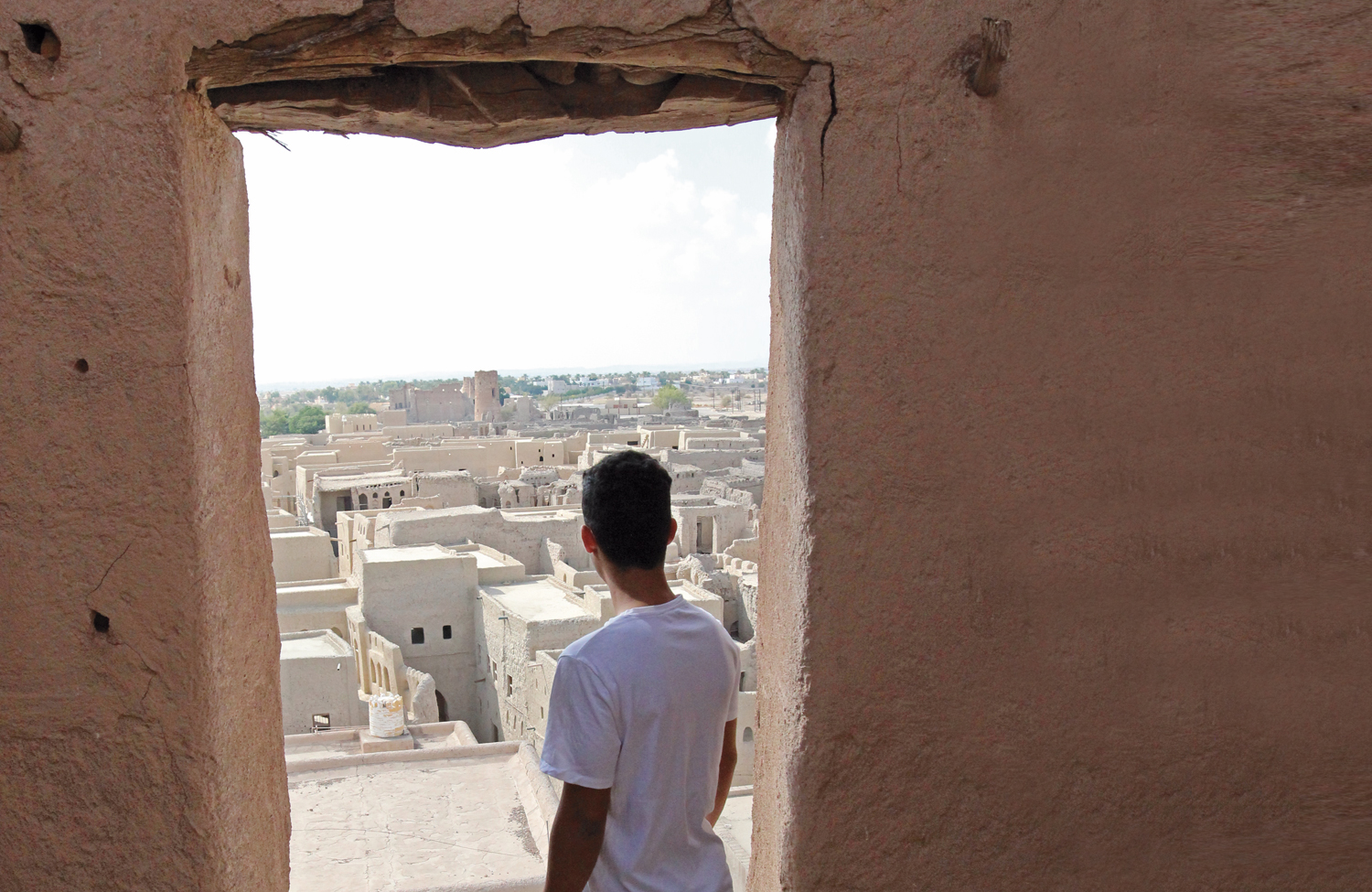

When one talks about Manah, it’s usually just a footnote of a story and a side trip when one heads to the Al Dakhiliyah Governorate. While it’s frequently overshadowed by the grandiosity and historical richness of its immediate neighbour — Nizwa, Manah upon closer inspection is essentially full of underrated historical sites and unique culture and traditions confined within its invisible town walls.
A two-day exploration yielded numerous discoveries. From seasonal camel races to a thriving football community to lush farms and vegetation and underground aflaj, the town is full of wonders eclipsed only by the augustness of its legends and myths and while it’s inching towards progress and development, there is no way its people will let go of their firm belief in the supernatural and magic.
And it is perhaps for this magic that Harith al Bilad, said to be the oldest town in Oman, is reemerging from the quagmire of destruction.
It’s quite hard to imagine what Manah was like in the past. Today, a cursory look of the area reveals modern houses influenced heavily by the styles seen in the capital. Barely two hours from Muscat and but about 15 minutes from Nizwa, it is home to around 30,000 people, about 15 percent of which are expats.

Travelling back to 500 years ago, a simple time yet with so much challenges to face, majority of Manah’s residents lived in Harith al Bilad — a sprawling complex of interconnected houses, a walled town that at its peak, was comprised of 376 structures (with houses estimated to be around 2000), the people living close with each other in mutual respect and peaceful reliance to the safety that the tall walls offer. Within the town walls are small gardens and farms and the alleys are maze-like that if you are a stranger, it’s easy to get lost.
This part of Manah’s history needs no imagination as the renovated structures sitting side by side with the old ruins of Harith al Bilad were opened to the public just recently and can now be inspected and seen in person.
After years of hard work courtesy of the Ministry of Heritage and Culture, today, 25 percent of Harith al Bilad had been renovated giving tourists and travellers an experience of what the walled town was like in the past. The renovation respected many of the ancient house-building technologies using straws and mud strategically to bring stability to many of the buildings.
Standing on top of one of the watchtowers located at the main entrance of the harith, the view was reminiscent of Aladdin’s city of Agrabah where it’s hard to tell where the roof of one house begins and where the others’ end. Inside these houses, some of the resources are communal like the wells that are the main source of water, usually shared by three to four families according to our local insider.
Previous reports listed 11 mosques within the walled town, almost a dozen council offices and other amenities but our inspection showed only two of these mosques were renovated and now are fitted with modern amenities particularly air conditioning.
“My great great grandparents used to live here,” Almutasim, a resident of the area shared.
“There was a time that even my parents used to live here. They forgot where their exact houses are but they described that it was a very different time,” he said.

resources available to them at that time.
Putting Manah on the tourist map
Two Omanis are currently keeping watch of the whole walled complex of Harith al Bilad. They usher in the guests and also serve as the concierge providing first-hand information about the history of the place as well as some key structures that can be found in the area.
They collect a fee of OR 2 for expats and OR 1 for Omanis.
“I am proud to share the long history of Manah and the achievements of its people. Harith al Bilad was totally closed in the 1980s with many of its former residents resettled somewhere where it was more convenient for them. With the renovation fully complete, all tourists and travellers can now see its former glory,” one of the elderly gentlemen said.
He added, “His Majesty Sultan Qaboos used to visit Manah and is hosted at one of the special council rooms. That room is very special for us.”
Upon entering the complex, some of the renovation plans are posted near the entrance to give a visitor an idea of the size of the area as well as the efforts made.

All of the rooms of the 25 percent of the area were restored completely to their former selves, from the kitchen areas to storage rooms and majlis and even the traditional hammam or toilet areas.
“A lot of people don’t know about Manah’s history so they usually brush it off as a historical destination. But Harith al Bilad can just be the starting point for them to get to know our town,” Almustasim said.
“We are excited to see what more can be done about it. We heard there were plans of making it as a set for a movie but personally, I’ll be happy if more people will discover its value as a tourist site,” he added.
While the people of Manah are still waiting for major announcements to be made about Harith al Bilad’s opening, some sporadic group tours are already beginning to find their way and enjoy the authenticity of the old town centre.
For this writer, it is my prediction that it won’t be long now until Manah’s Harith al Bilad will become a tourist magnet. It has the potential to grow as popular as Al Hamra’s Bait Al Safah if it takes the inspiration of making it into an interactive, living museum.
YERU EBUEN
Oman Observer is now on the WhatsApp channel. Click here



